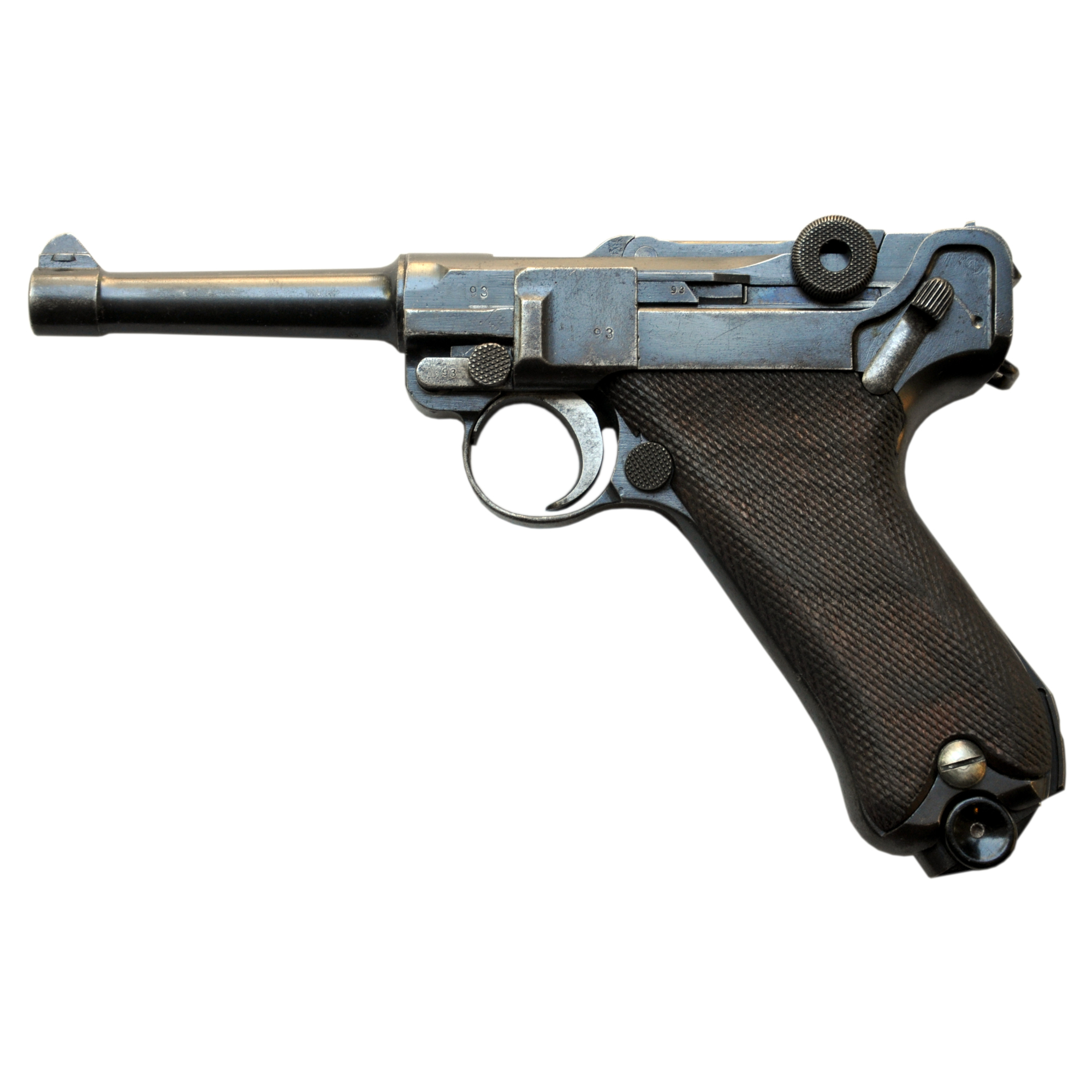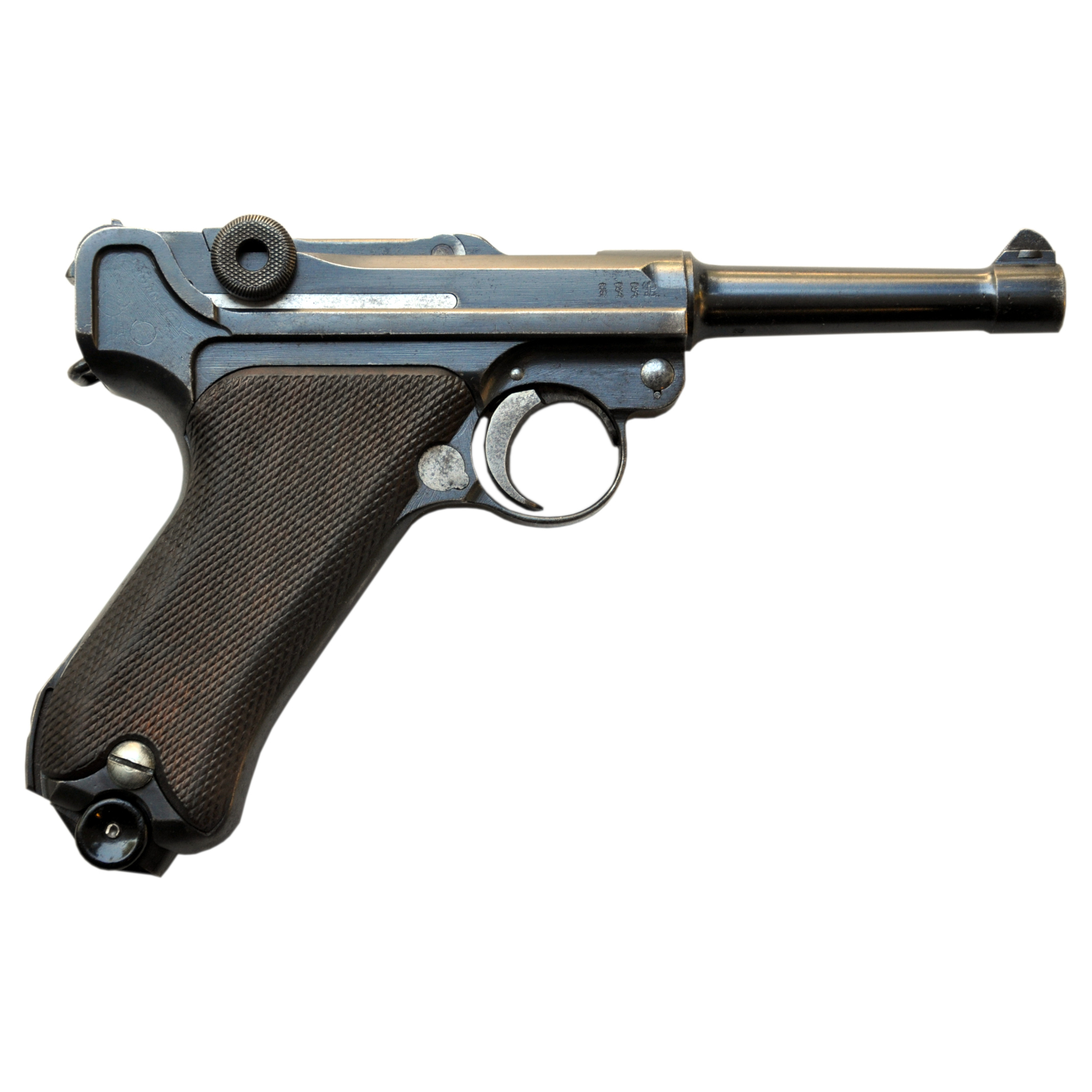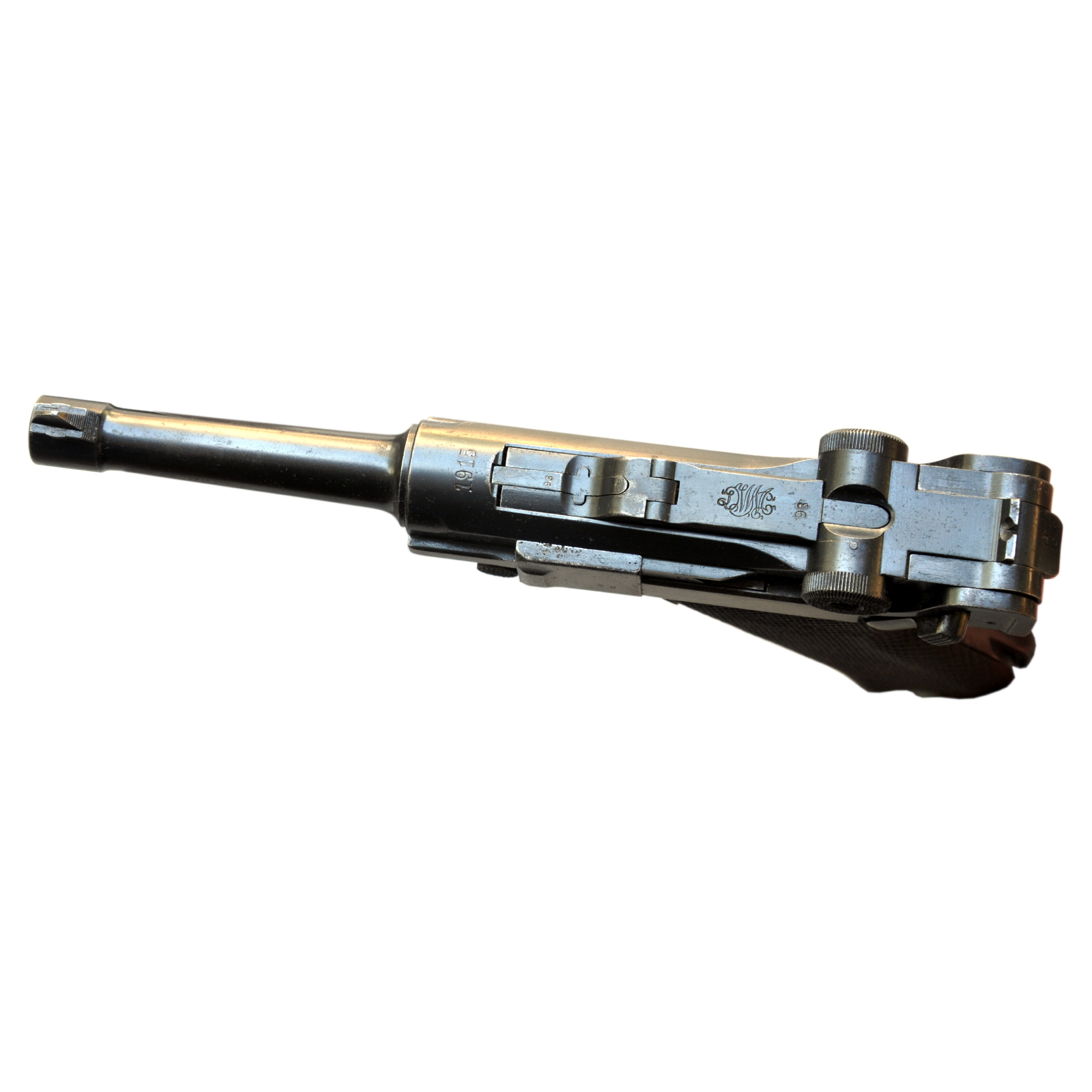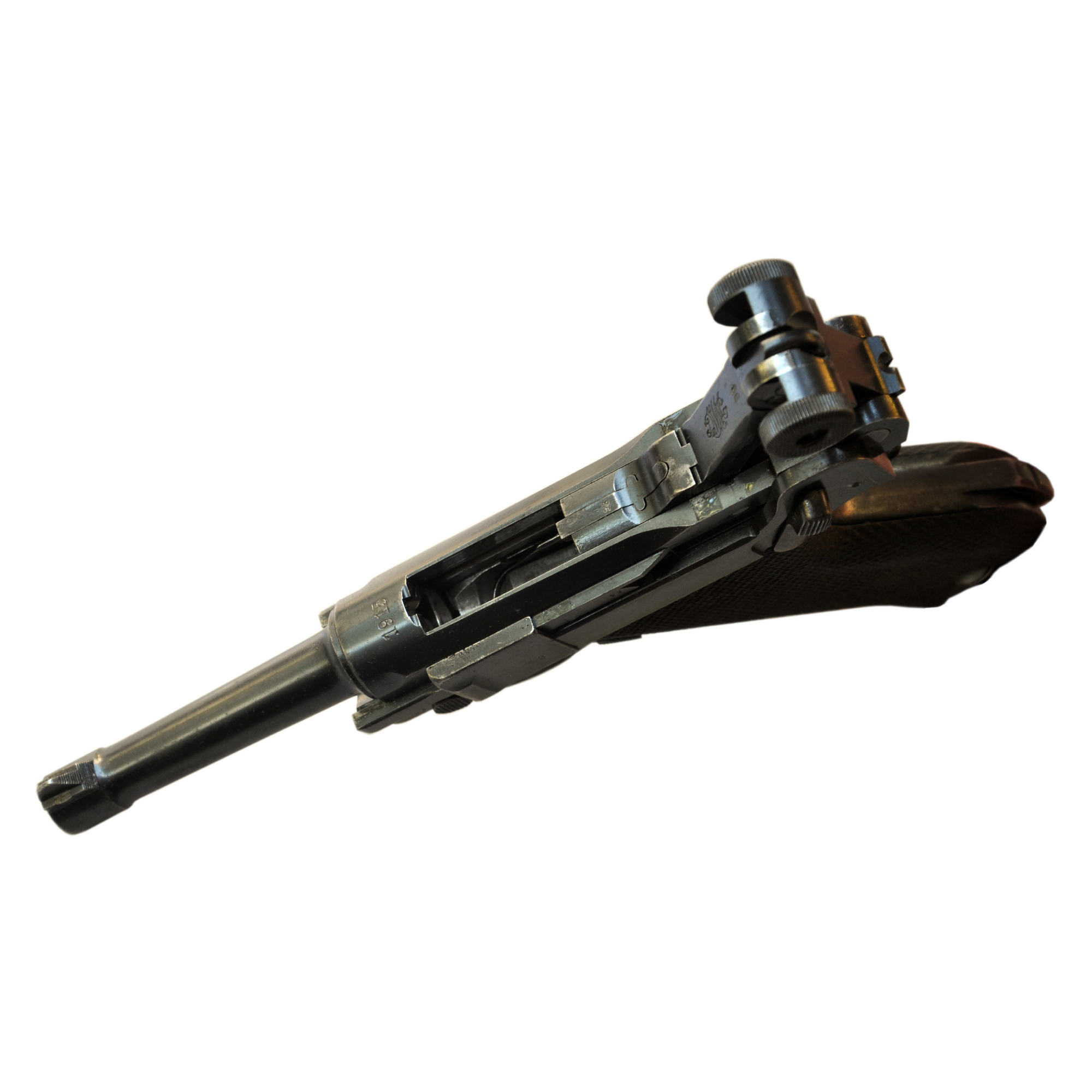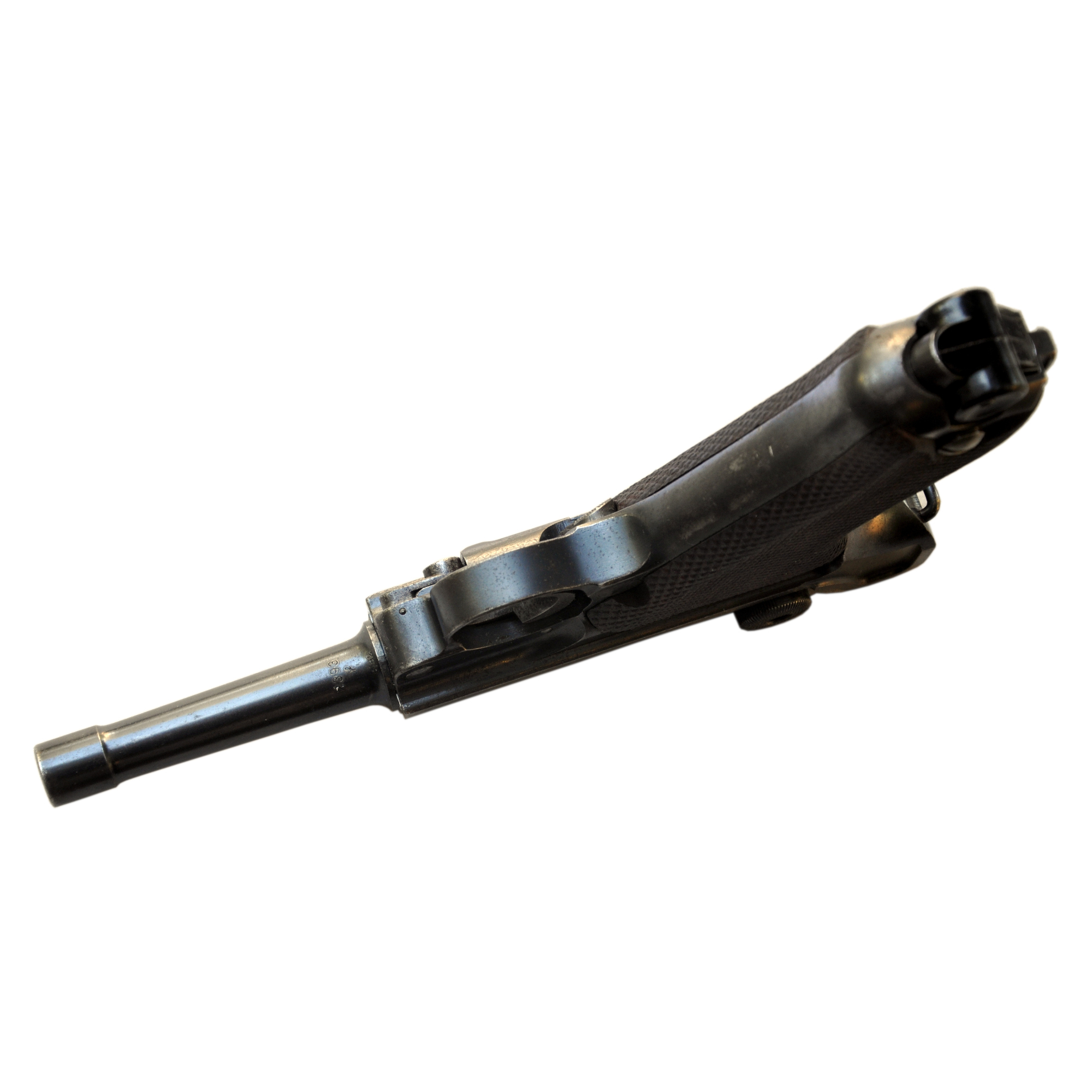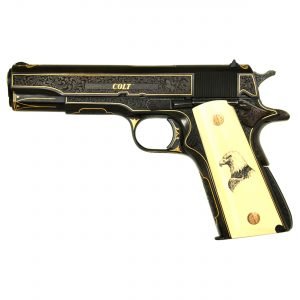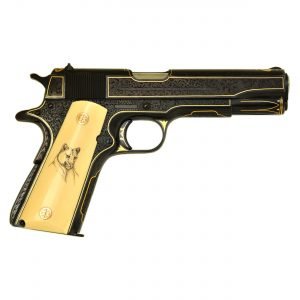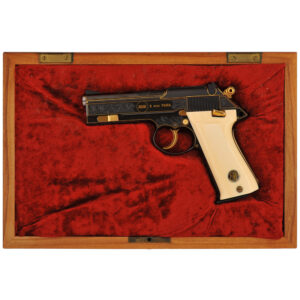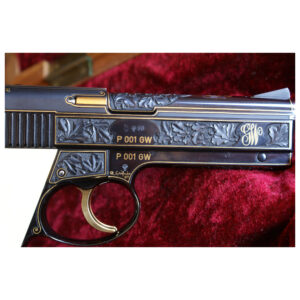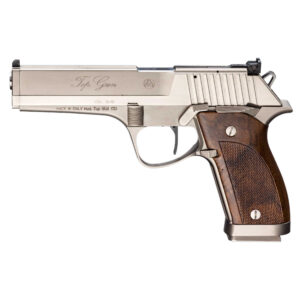DWM Luger Parabellum P08 1915 9x19mm
€ 2.000
DWM Luger Parabellum P08 1915 9x19mm
Model: Pistole Parabellum P08
Üretici: DWM – Deutsche Waffen und Munitionsfabriken
Çapı: 9×19 mm Parabellum (9 mm)
Namlu Boyu: 3.9″ (100 mm)
Kapasite: 8+1
Ağırlık: 871 gr (1 lb 15 oz)
Uzunluk: 222 mm (8.74 in)
Üretim Yılı: 1915
Stokta yok
Açıklama
DWM Luger Parabellum P08 1915 9x19mm
The Pistole Parabellum—or Parabellum-Pistole (Pistol Parabellum), commonly known as just Luger—is a toggle-locked recoil-operated semi-automatic pistol produced in several models and by several nations from 1898 to 1948. The design was first patented by Georg Luger as an improvement upon the Borchardt Automatic Pistol and was produced as the Parabellum Automatic Pistol, Borchardt-Luger System by the German arms manufacturer Deutsche Waffen und Munitionsfabriken (DWM). The first production model was known as the Modell 1900 Parabellum. Later versions included the Pistol Parabellum Model 1908 or P08 which was produced by DWM and other manufacturers such as W+F Bern, Krieghoff, Simson, Mauser, and Vickers. The first Parabellum pistol was adopted by the Swiss army in May 1900. In German Army service, it was adopted in modified form as the Pistol Model 1908 (P08) in caliber 9×19mm Parabellum. The Model 08 was eventually succeeded by the Walther P38.
The Luger is well known from its use by Germans during World War I and World War II, along with the interwar Weimar Republic and the postwar East German Volkspolizei. The P.08 was introduced in 7.65mm Parabellum, though it is notable for being the pistol for which the 9×19mm Parabellum cartridge was developed, also known as the 9×19mm Luger. The pistol has been used in fictional works by many villainous characters over the past several decades because of its association with Nazi Germany.
Pistole Modell 1908 (P08) and World War I
In 1908, the German Army adopted the DWM Parabellum pistol as the Pistole Modell 1908 (P08) Parabellum to replace the Reichsrevolver in front-line service. The Pistole 08 (or P.08) had a 100 mm (3.9 in) barrel and was chambered in 9×19mm Parabellum. This version of Georg Luger’s design reflected a number of improvements requested by German military authorities. The grip safety used on earlier versions was omitted, while a lug was attached to the heel of the pistol frame for attachment of a shoulder stock. The barrel was reduced in length to 4 inches (102mm), and the caliber was 9x19mm Parabellum, and the 9x19mm DWM cartridge (Catalog No. 278F) initially adopted by the German Army featured a 123-grain truncated-nose bullet design intended to increase wounding effect of the fully jacketed bullet. With slight modifications, notably the addition of a stock mounting lug and a hold-open latch, the P08 would serve as the German Army’s principal sidearm during World War I, augmented by Mauser C96 and Model 1914 pistols. Over 2 million Luger pistols were used by German forces from 1914 to 1918.
The Bolivian Army also adopted the DWM Luger in 9×19mm Parabellum as an officer’s sidearm; 500 were bought in 1913. They bore the legend “Ejercito Boliviano” stamped on the chamber.
Lange Pistole 08 (Artillery Luger)
The adoption of the Lange Pistole 08 or LP 08, aka the “Artillery Luger”, was authorized by the Kaiser on the 2nd of July 1913. This P08 variation was equipped with a 200 mm (7.9 in) barrel, an 8-position tangent rear sight (calibrated to 800 meters (870 yd)) and a board-type shoulder stock with an attached leather holster. In the event of close combat, the pistol was intended to be used as a carbine with the shoulder stock attached to a lug mounted on the heel of the pistol frame. When set for long range use the rear sight element visibly moves to the left to compensate for spin drift. While initially intended for use by German artillery units who could not be encumbered by the long and heavy K.98 rifle, the LP 08 was also used by Aviation units (prior to equipping aircraft with machine guns) as well as the Infantry, primarily on the Western front during World War I. The famous infantry Stoßtruppen or Stormtrooper units frequently employed the Artillery Luger equipped with a new large magazine – the 32-round Trommelmagazin or ‘snail’ magazine. Production of the LP 08 ended in 1918 with the end of the war. By that time, German troops had begun using the newly developed MP 18 submachine gun in place of the LP 08 for their stormtroop assault companies. However, by this time enough LP 08 barrels had been manufactured and stockpiled to fill LP 08 export orders into the 1930s.
Carbine versions of the LP 08 were also produced commercially, with yet longer barrels. The firm Armeria Belga of Santiago (Chile) also manufactured a detachable stock, the Benke Thiemann stock, that could fold out from the grip section.
In the early 1920s, carbine production was restarted, with barrels up to 600mm (24 in) long. Under a small contract, LP 08 or Artillery P08s were assembled in the 1930s to fill an order from the Shah of Iran for his artillery troops, with some of these weapons ending up with Thai police forces. Existing LP 08 pistols which had remained in storage were re-issued in WWII with new-production board stocks for some German units such as artillerymen and Waffen SS units, and these continued in use until the end of the war in 1945.




